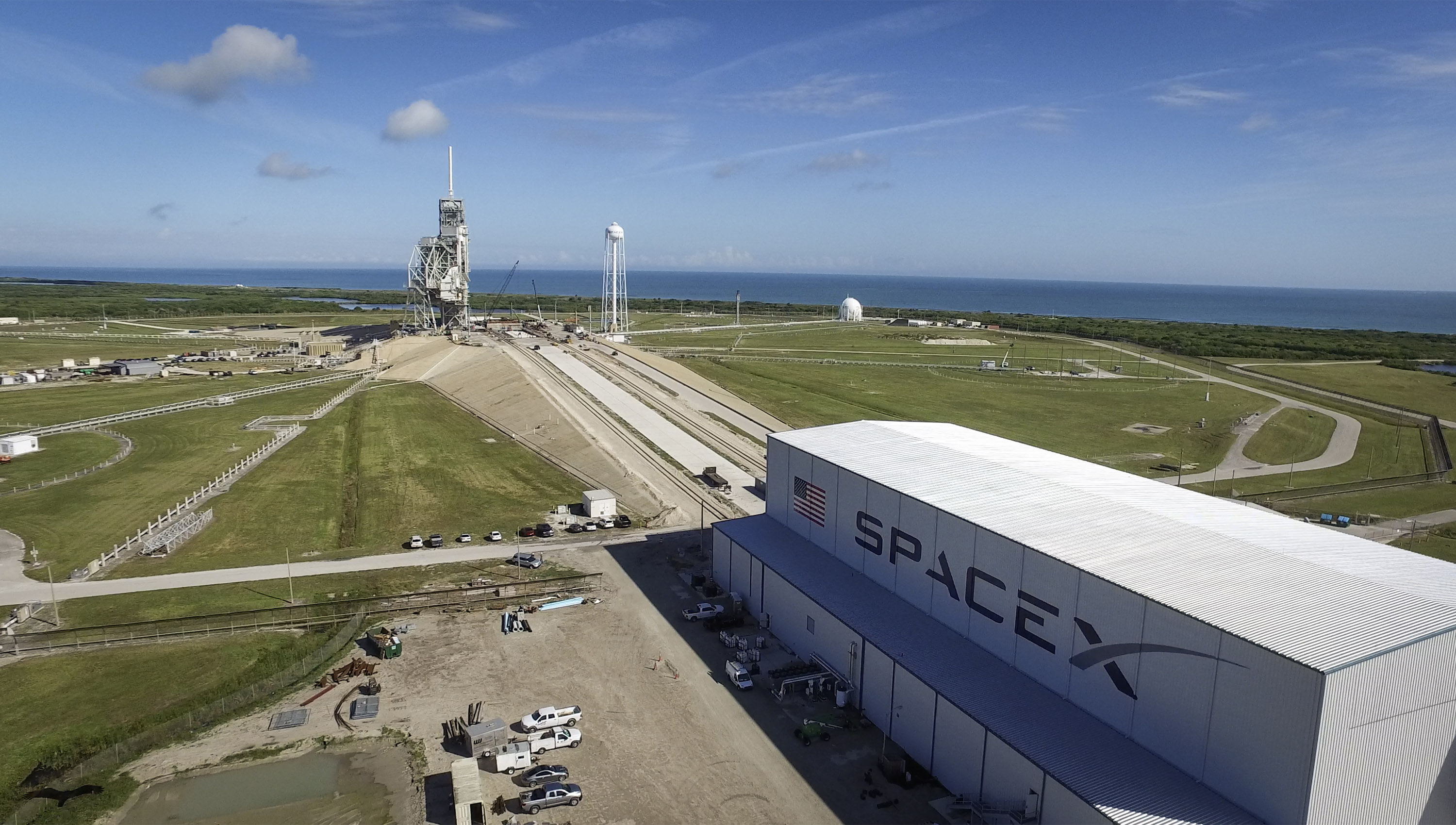SpaceX's Falcon 9 Rocket Stands Atop Historic NASA Launchpad for 1st Time

SpaceX's Falcon 9 rocket has gone vertical at NASA's historic Launch Complex 39A (LC-39A) for the first time.
The California-based company is getting ready for a planned Feb. 18 liftoff from LC-39A, which is part of NASA's Kennedy Space Center in Florida. The Falcon 9 will blast SpaceX's robotic Dragon cargo capsule toward the International Space Station (ISS) for NASA, if all goes according to plan.
Over the years, Apollo moon missions and space shuttles lifted off from LC-39A. SpaceX signed a 20-year lease for the pad in 2014 and, after making some modifications, is now ready to start using it.
"This is the same launch pad used by the Saturn V rocket that first took people to the moon in 1969. We are honored to be allowed to use it," SpaceX founder and CEO Elon Musk posted on Instagram Friday (Feb. 10), along with a photo of the Falcon 9 at LC-39A.
The Feb. 18 launch will kick off SpaceX's 10th ISS resupply mission, during which Dragon will deliver more than 5,500 lbs. (2,500 kg) of scientific hardware and other cargo to the orbiting lab.
SpaceX plans to launch Falcon Heavy rockets as well as Falcon 9s from LC-39A. The Falcon Heavy is still in development; the booster's first flight should come sometime this year, Musk has said.
The last launch from LC-39A occurred in July 2011, when the orbiter Atlantis lifted off on the last-ever mission of NASA's space shuttle program.
Get the Space.com Newsletter
Breaking space news, the latest updates on rocket launches, skywatching events and more!
Follow Mike Wall on Twitter @michaeldwall and Google+. Follow us @Spacedotcom, Facebook or Google+. Originally published on Space.com.
Join our Space Forums to keep talking space on the latest missions, night sky and more! And if you have a news tip, correction or comment, let us know at: community@space.com.

Michael Wall is a Senior Space Writer with Space.com and joined the team in 2010. He primarily covers exoplanets, spaceflight and military space, but has been known to dabble in the space art beat. His book about the search for alien life, "Out There," was published on Nov. 13, 2018. Before becoming a science writer, Michael worked as a herpetologist and wildlife biologist. He has a Ph.D. in evolutionary biology from the University of Sydney, Australia, a bachelor's degree from the University of Arizona, and a graduate certificate in science writing from the University of California, Santa Cruz. To find out what his latest project is, you can follow Michael on Twitter.









